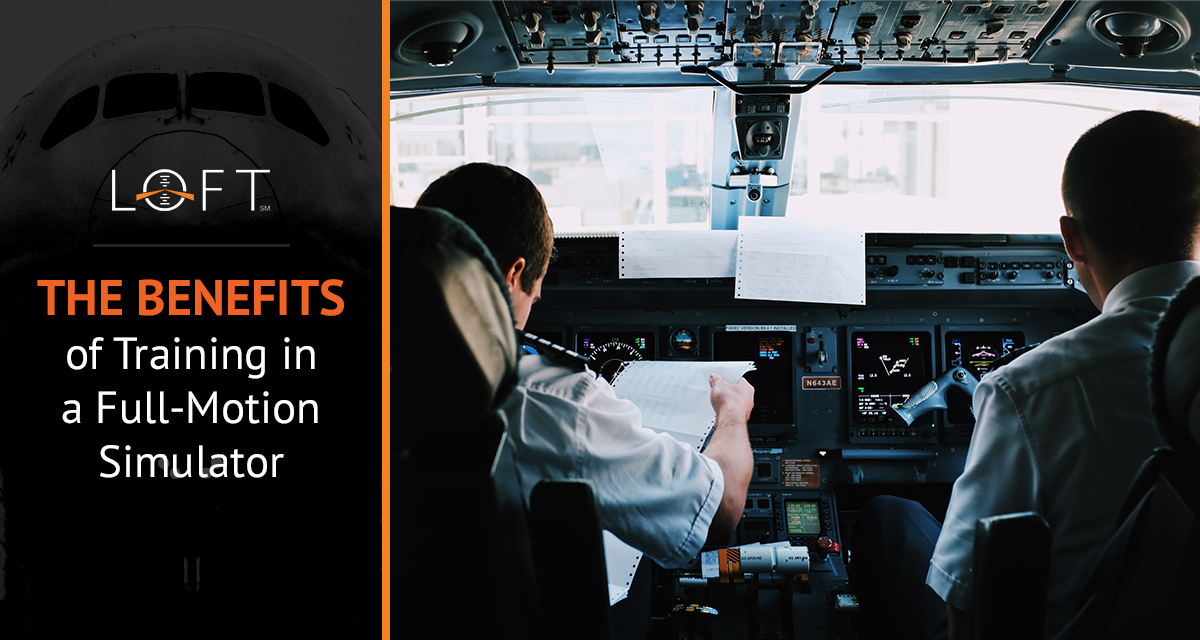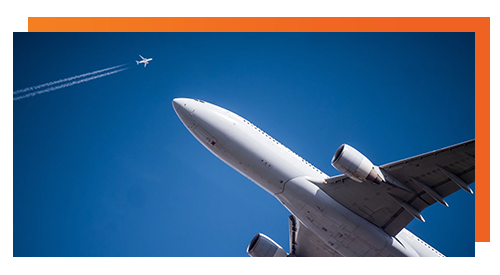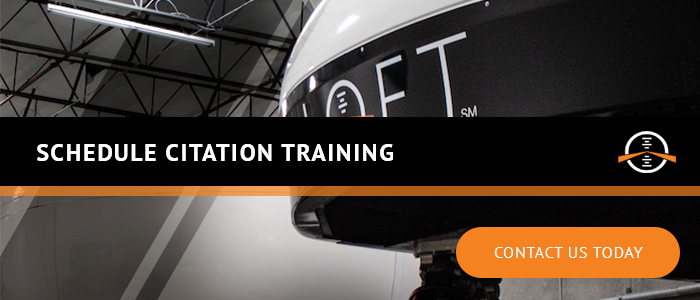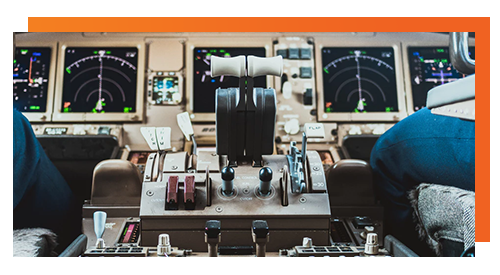The Benefits of Training in a Full-Motion Simulator

Flying was much more dangerous in the early days of aviation. The problem was that pilots did not have a training tool that mimicked the sensation of flight so that they could practice their skills from the safety of the ground.
But in 1927, a pilot and flight instructor named Ed Link invented the world’s first flight simulator called the Link Trainer. The Link Trainer replicated a complete cockpit and allowed pilots to gain much-needed experience without having to be in the air and risking death.
Much has changed and progressed since the Link Trainer was first put to use in 1927. Modern flight simulators have evolved tremendously thanks to advanced technology and other factors. Modern flight simulators are highly realistic and range from smartphone apps to immerse in virtual reality options to full-motion enclosed devices that can be used for citation training.

Purpose and Form
The primary purpose of a flight simulator is to train a pilot to achieve, test and maintain proficiency in the operation of an aircraft without the risk of person or property. It is also much less expensive to train in a flight simulator than it is to actually fly an airplane to receive training.
At its most basic form, a flight simulator will include:
- A computer system or systems that process control inputs to digitally generate audio and visual representations in response to the inputs. Flight data is also recorded for analysis.
- An audio system to produce realistic communications and sounds including external sounds, aircraft sounds and cockpit sounds.
- Control devices including a control stick or yoke and rudder pedals.
- A display or multiple displays that represent the external environment.
The True Value of Simulation

Despite a long history of aviation reforms, the percentages of plane crashes where the blame fell on the pilot remained steady for about 50 years. Between 1940 and 1990, around 60% of crashes were due to pilot error. And it didn’t matter what type of plane was being flown at the time. It was a brutal truth: Most aviation crashes were due to pilots making bad decisions.
The latest statistics are much brighter. Since the introduction of highly realistic flight simulators in the 1980s, there has been a 70% reduction in the number of accidents caused by pilot error. So now less than 30 percent of plane accidents are caused by a pilot making a bad decision.
The real benefit of a flight simulator is that it forces pilots to internalize their experience instead of merely memorizing what has been written on the chalkboard. Simulators force pilots to learn how to stay calm and think clearly through a traumatic experience. Bad stuff happens when you are up in the air and pilots need to learn how to stay calm and think clearly.
The point is that pilots are a profession in which important decisions are inherently emotional and instinctive. This is why it is critical that they get to practice in that emotional state. Transferring the hours of simulator practice to the real world saves thousands and thousands of lives every year.
![]()
Learn More in Less Time
There are studies that claim an hour of training in a flight simulator is equal to two hours of the same type of training in an actual plane. Which means you will learn much more in a shorter time frame when you incorporate flight simulator training into your flight training process.
In addition to learning more, this method of pilot training is a lot less expensive than training on a real plane. It is quite easy to see why this is a chosen method for training pilots.
Building Confidence
A flight simulator gives anybody the opportunity to practice a particular scenario over and over until it can be nailed down. Pilots who have trained on simulators are fully confident in their ability to fly a plane in almost any circumstance. If you practice something enough, it just becomes second nature.
Train at Any Time
Flight training on an actual airplane has its limits. For example, you can’t train on an airplane in inclement weather or when it is dark. One of the benefits of training on a flight simulator is that you can practice any time of the day or night and even in the middle of a thunderstorm.
Tricky Weather Conditions
A pilot’s flying technique needs to adapt to particular weather conditions. Whether it involves, snow, rain, wind or other weather conditions, pilots need to adapt. Since we have no control over the weather, it is impossible to create such scenarios in the real world.
Rather than sitting around waiting for particular weather conditions to occur, it is far easier to create these conditions with flight simulation.
Do It Again
If things go according to plan while in a flight simulator, you simply do it over and over until you are satisfied with the end result. You can’t do this while flying an actual plane, there are serious consequences.
Improving Navigation Skills
If you are planning to fly to an unfamiliar airport or on a cross-country trip, a flight simulator can be used to practice the route ahead of time.
Practice Communication
Many student pilots are intimidated by the fundamentals of radio communication. There are even veteran pilots who at times may struggle to keep up with the fast pace of ATC communication. Flight simulators offer student and veteran pilots a way in which they can practice proper radio techniques and master the skills needed for ATC communication.
Enables Your Full Attention
While training in a flight simulator, your full attention is devoted to your training and there are no other distractions. In addition, the instructor’s attention is also focused on your training and not on other matters that inevitably come up when flying a plane.
Wear and Tear
Save wear and tear on your aircraft by doing your training on a flight simulator. Risking the simulator while training is much preferred over risking your aircraft.
Whether they are used to maintain proficiency, learn something new or to practice emergency procedures, flight simulators are powerful tools for pilots of all experience levels.











